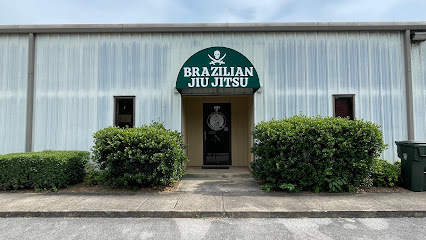After living with chronic sinus problems for a long time, your situation has deteriorated so much that even the very first signs of a day without eye pressure or a day of free nasal breathing seem to be nothing more than a distant memory. You go through a trial-and-error process with medications, nasal sprays, inhalations, and even maybe some home remedy which someone is swearing by — but still, there comes the congestion, headaches, and facial pressure again. If you can relate to this situation, then you have probably come across the term balloon nose sinuplasty as a potential treatment. But what’s the procedure really like? Is it really that bad? What is the time needed for recovery? And more importantly, is it worth it at all?
Let’s take the same journey the other way round, not the way of the doctor but the way of the human being, the way that truly makes sense, the way that a person hopelessly trapped in the never-ending cycle of sinus suffering will relate to.
The Daily Struggle of Chronic Sinus Issues
Chronic sinusitis is more than a stuffy nose. It’s oppressive, persistent. It influences the way you sleep, the way you think, and even the way you speak. Many describe it as having a weight behind their face at all times, as if pressure that won’t abate.
Perhaps you’ve had cycles of antibiotics. Perhaps you’ve attempted steroid sprays, decongestants, saline washes, essential oils — the whole list. And a single cold or allergy outbreak is enough to have you spiraling again into congestion, headaches, postnasal drip, and that tired, fuzzy feeling.
That’s exactly where balloon nose sinuplasty enters the discussion — not as a band-aid fix, but as a minimally invasive nose balloon procedure to let your sinuses have a chance to work properly again.
The Procedure: Step-by-Step in Real Terms
If you’re someone who gets anxious just hearing the word procedure, understanding what actually happens may bring some peace.
Step 1 – Preparation
You’ll likely receive a local anesthetic to numb the nasal area. Some patients undergo mild sedation to help them relax, especially if it’s done in the office.
Step 2 – Insertion
A small balloon catheter is inserted through the blocked sinus opening. You may feel pressure, but not stinging pain.
Step 3 – Inflation
The balloon is inflated for several seconds, slowly expanding the sinus passage. The pressure will feel strange, almost like when you are underwater, but it will only last a few seconds.
Step 4 – Flush & Removal
Sometimes, a saltwater rinse is used to drain out accumulated mucus. The balloon is then deflated and withdrawn. No tissue is incised, and your sinus structure is left intact.
Total Time?
Generally, 30 minutes to an hour.
Is It Painful?
Most patients report it more as discomfort than pain. Pressure, fullness, or stretching — yes. Sharp pain — not typically. The aim is to make it as smooth and tolerable as possible. Many are surprised at how quickly it’s done.
What Happens After the Procedure?
Recovery is one of the largest reasons individuals opt for balloon sinuplasty instead of traditional surgery. The majority of them go home on the same day and get back to light activities in 24–48 hours.
Typical Recovery Experiences:
- Mild stuffiness
- Minor swelling or redness
- Light bloody nasal drainage (for a day or two)
- Postnasal drip or sinus fullness
No nasal packing is typically necessary, which is quite a relief compared to other sinus procedures.
How to Facilitate Recovery at Home
Your physician will direct you, but the following are general components of aftercare:
Use saline irrigations to keep the passages open
- Rest for a few days
- Sleep with your head raised
- Take medication as instructed (usually mild pain medication or antibiotics)
Avoid smoking or heavy allergen exposure
Generally, it’s an uneventful recovery based on letting the sinuses heal and remain open.
When to Call the Doctor
Complications are unlikely but not impossible. Call your provider if you develop:
- Fever
- Excessive bleeding
- Increasing pain
- Vision change or dizziness
- Staying in regular contact with your ENT is important.
How Soon Will You Feel Relief?
Some notice relief within days — increased breathing, improved sleep, and less pressure. Others will notice slow improvement over several weeks as the inflammation decreases. Patience is crucial for patients with extensive sinus damage.
Pros of Balloon Sinuplasty
- Minimally invasive
- Quick recovery time
- In-office procedure
- No extensive tissue removal
- Long-term relief for most patients
Possible Limitations
- Not for all cases, particularly if there are large polyps or structural problems
- May be used in conjunction with other treatments
- Results may be unpredictable, particularly if the underlying allergies are not controlled
It’s not a magic fix, but a very powerful tool when applied to the right candidates.
Is Balloon Sinuplasty a Permanent Fix?
For some, yes. Research indicates long-term outcomes, relief tending to last years after treatment. But if unchecked, chronic allergies or inflammation may necessitate future nose balloon procedure. Triggers must still be managed: dust, pollen, smoke, or chronic infections.
Real-Life Impact: What Patients Often Say
Patients do not discuss medical terminology; they discuss everyday life. They discuss being able to wake up and breathe easily through both nostrils. They discuss having fewer headaches, fewer days off sick, improved sleep, and even being able to taste food. That’s the human element — the most important part.
Last Thought: Is It Worth the Discussion?
If chronic sinus problems have subtly stolen the quality of your days, balloon sinuplasty is at least worth a serious consultation with an expert like Fort Worth ENT & Sinus. It’s not about pursuing “perfect health.” It’s about taking back the little things — breathing freely, thinking clearly, living fully.
Ask yourself, when did you last take a fresh, deep breath without having to force it? If you can’t recall, perhaps it’s time to think about a different road. Relief doesn’t have to be something dreamed of. Sometimes it only requires opening the correct passage. So, what are you waiting for? Consult Fort Worth ENT & Sinus.


